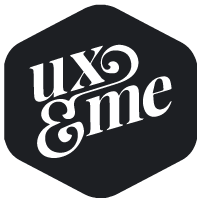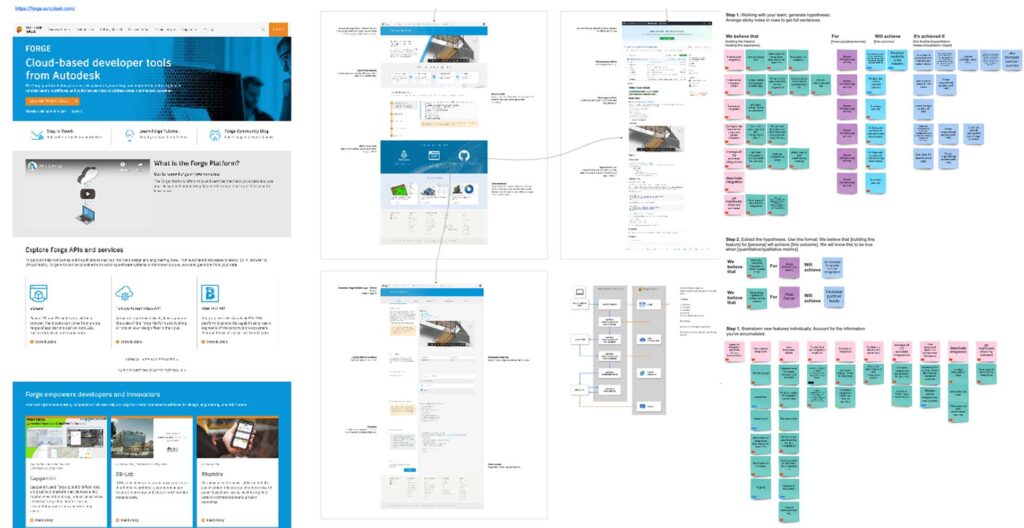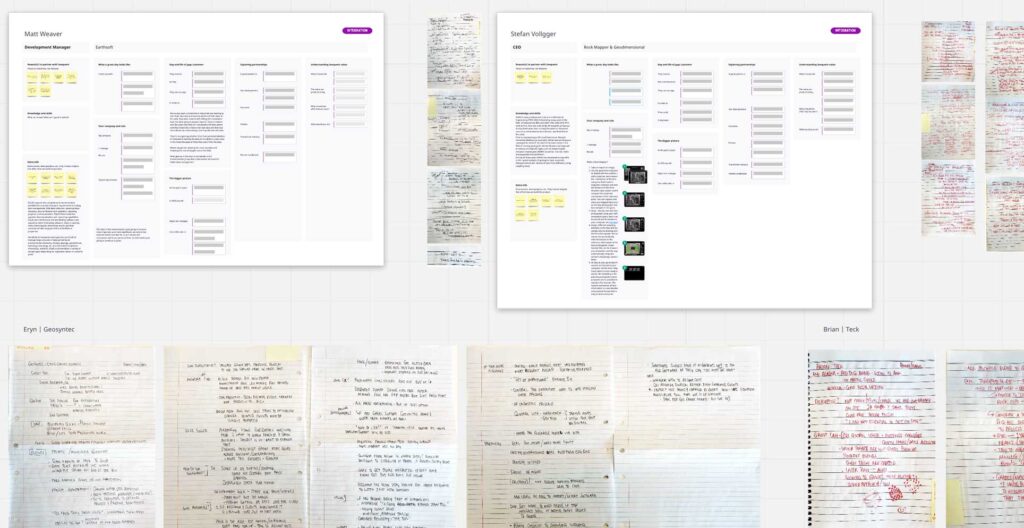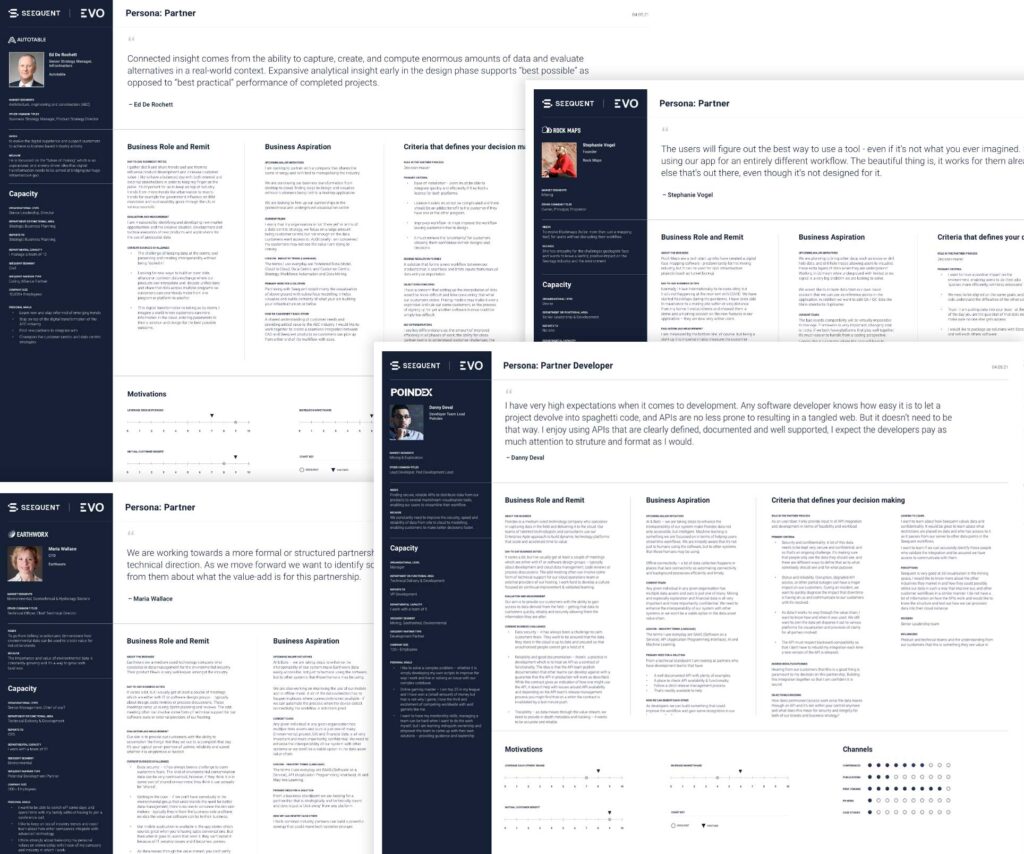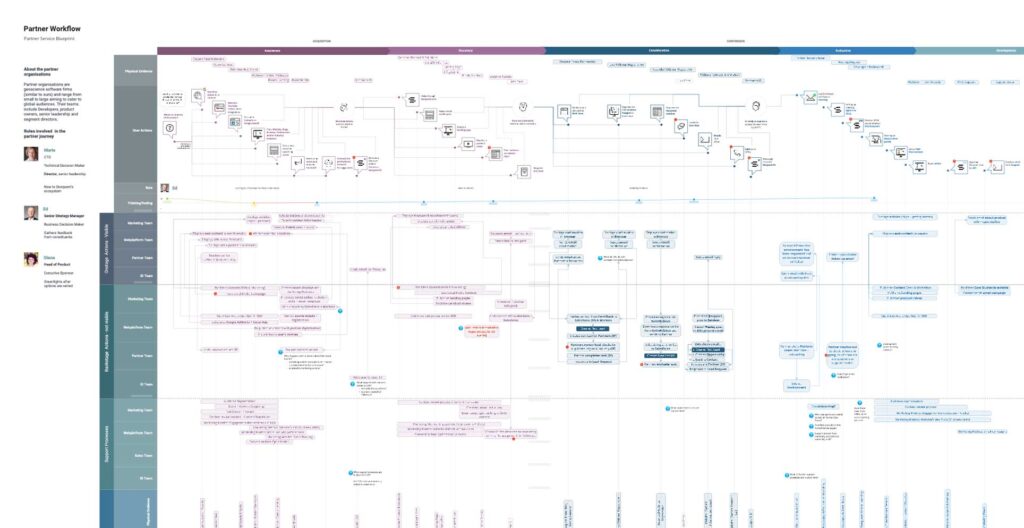Evo is a vision for the future of geoscience software – spanning desktop and cloud applications, APIs, and exciting new micro-capabilities (like notifications and web visualisation). It is not just for geoscientists and engineers – it’s for data scientists, IT managers, developers, and stakeholders.
Role
Contributing to the formation of the business model and product strategy – I defined target audience, defined the initial research and UX plans, captured and defined analysis and delivered prototypes for testing & production. I collaborated with a diverse, multidisciplinary team spanning Christchurch, Auckland, Vancouver & Toronto covering significant ground, challenging foundational business assumptions and identifying opportunities.
Outcome
Successfully delivered a comprehensive business plan and product strategy, aligning the platform’s development with the needs of key stakeholders. This resulted in the creation of a beta version of EVO, ready for user testing and production rollout.
Project Context
EVO is Seequent’s strategic initiative to build a cloud-based platform designed for geoscientists, engineers, and other professionals in the civil and mining industries. The goal was to create a new ecosystem that would streamline collaboration, data integration, and decision-making across large, multi-disciplinary teams. My role was to define and deliver user research outputs and direction of user experience for the product, ensuring it addressed the key needs of its intended audience.
Challenges
- Industry Alignment: Understanding the specific needs and workflows of professionals in the civil and mining sectors to ensure EVO would deliver meaningful value.
- Executive Buy-In: Gaining insights and support from top industry executives to shape the product strategy and ensure its market relevance.
- User-Centric Product Development: Defining target audiences and developing a clear UX research plan to guide the product’s evolution in a user-centred way.
Approach
Research & Business Case Development
Attain the benchmark from researching other API frameworks. Identify aspects that stood out from good/bad usability and identify additional functionality and flow.
We engaged with diverse range of customers and partners, spanning industries, roles and areas of expertise. These one-on-one conversations use open-ended questions to elicit stories about specific experiences that help uncover unacknowledged needs. This protocol allows the interviewer to probe more deeply into stories than a more traditional interview.

Lead with empathy
Engage with diverse customers and partners, spanning industries, roles and areas of expertise to understand their aspirations, challenges and jobs to be done.

Desire first
In this approach, we unusually tackled the challenge of creating Evo from the desirability lens – using the needs of customers to provide objectivity and clarity in the business design process.

Assumptions to facts
To ensure objectivity and provide clarity, we set out to identify and define assumptions and replace them with facts through interviews and feedback with users.

Ecosystem thinking
Evo is an opportunity is to create an ecosystem that connects partners and customers and deliver a disproportionate amount of value to geology workflows.
Personas
After we transcribed the interviews, segmented the audiences, we derived personae from the individuals that stood out as the main segments in each of the specified audiences.
With the following in mind:
- Identify the nature of the journeys customers take—from their point of view
- Understand how customers navigate across the touch points
- Anticipate the customer’s needs, expectations, and desires
- Set priorities for the most important gaps and opportunities
Partner Value Propositions
The partner segmentation transformed how we look at Evo partners – from alliance, integration, and resellers to an approach which categorises partners based on their commercial reciprocal relationship with Evo.
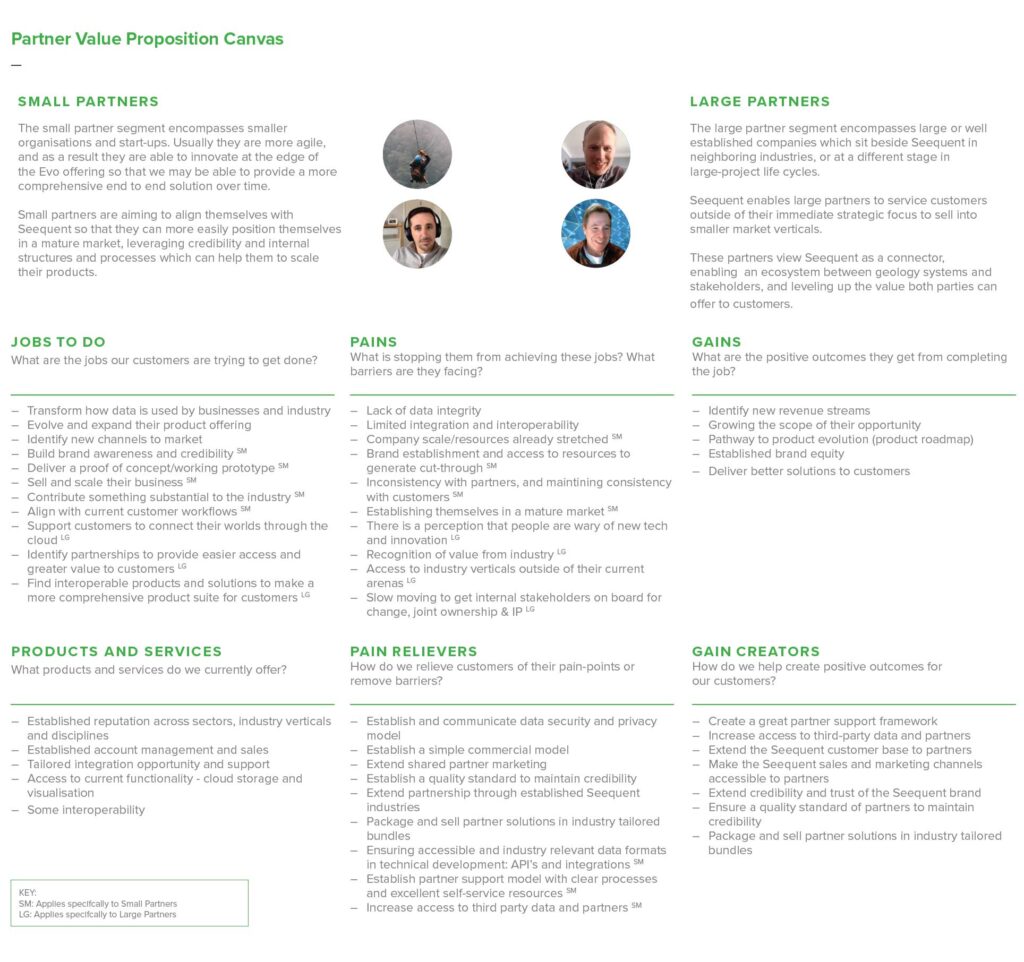
Customer Value Propositions
The customer segmentation framework shifted from focusing on industry verticals to customer categories based on behavioral traits of role types, and the jobs that they are trying to get done.
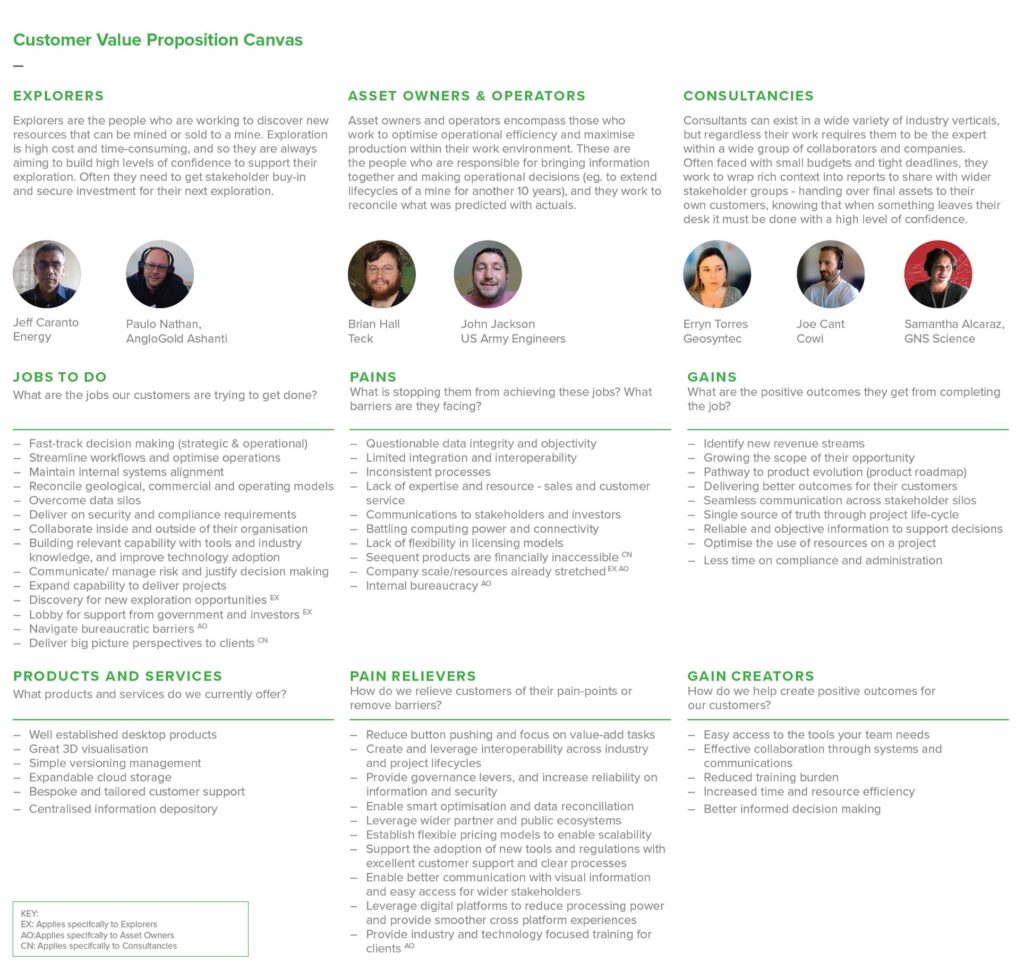
Task user matrix
The general flow of the product as it is build & used within the ecosystem, this helped derive sections so that it could allow for simultaneous design and development of individual components. This helped the team view all stages of the flow on a higher level.
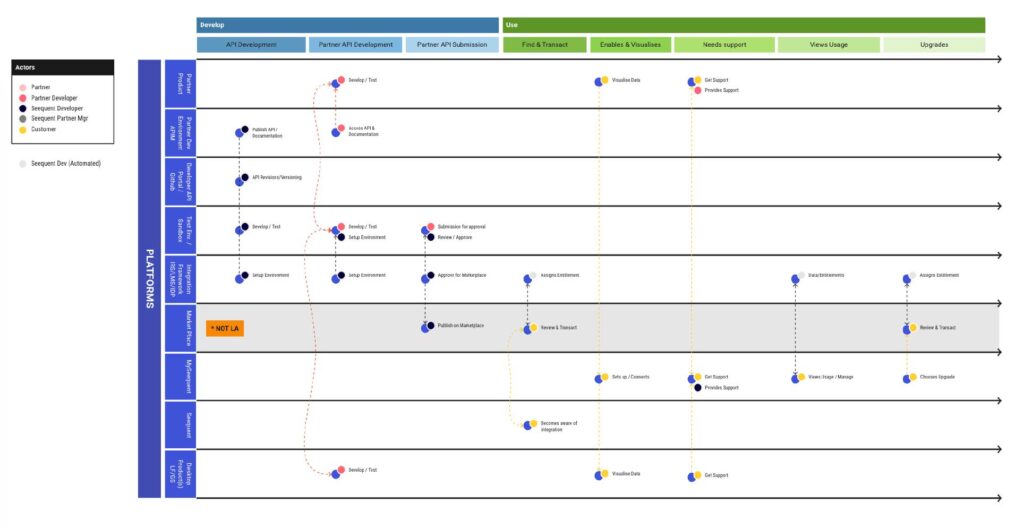
Lo-fi Wireframes
We created wireframes and carried out usability tests to determine if we were successful in the direction of our strategy and flows.
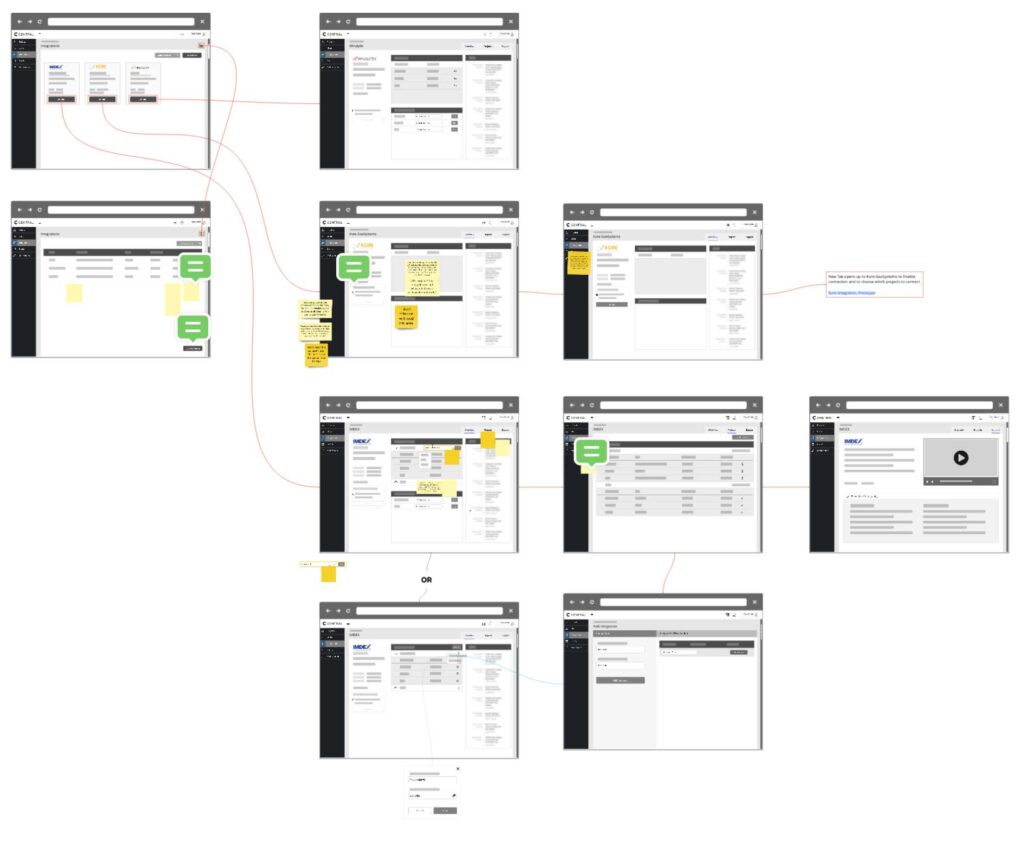
Solution
The result was a well-formulated business plan and product strategy for Seequent EVO, tailored to the needs of the civil and mining sectors. Key outcomes included:
- Clear Market Positioning: The product strategy identified key differentiators and market positioning for EVO, ensuring its competitive edge.
- Defined UX Research Roadmap: The UX research plan set the stage for future user testing and iterative development, ensuring that the beta version was ready for real-world testing.
- Beta Delivery: I oversaw the delivery of a beta version, which was designed to test key features and gather feedback from initial users for further refinement.
Results
- Executive Alignment: Successfully gained buy-in from industry leaders, whose insights directly shaped the product’s strategic direction.
- Market-Ready Beta: Delivered a beta version of EVO, ready for testing in real-world scenarios, which laid the foundation for the product’s future iterations and production release.
- Strategic Product Roadmap: The business plan and strategy provided a clear path forward, aligning EVO’s development with market needs and user requirements.
